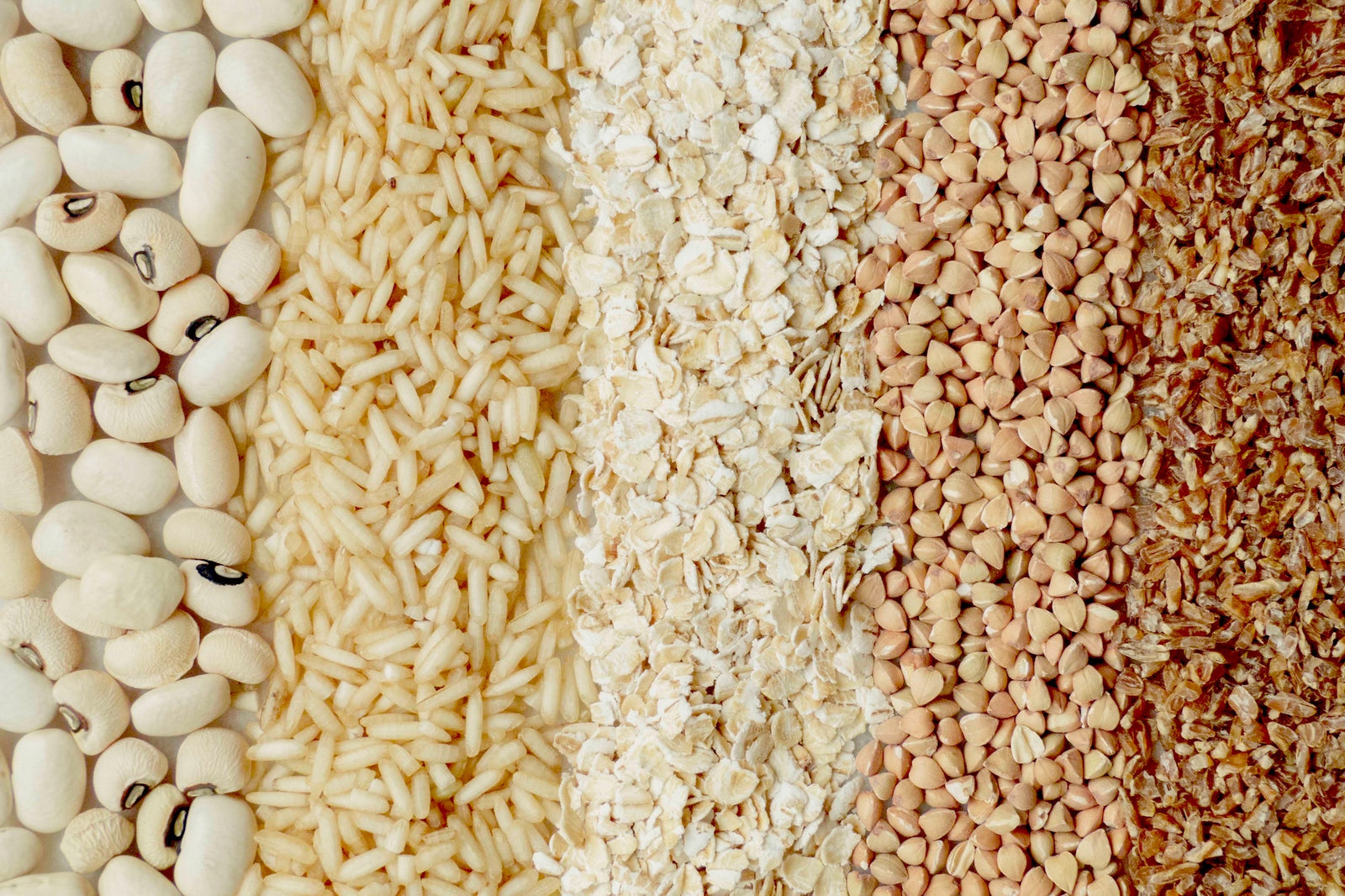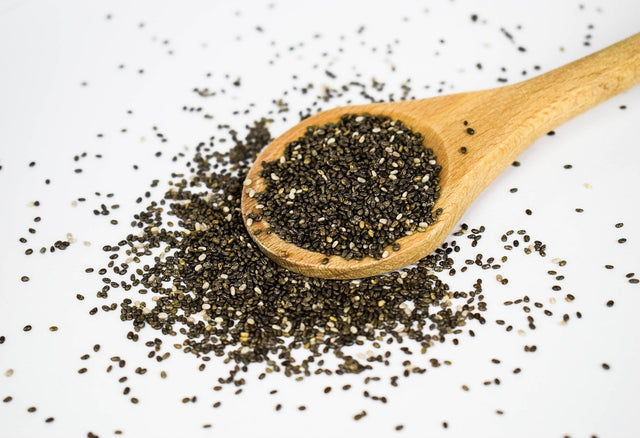Grains, also referred to as cereals and whole grains, are the seeds of grasses that we use as a food source. They’re the worlds biggest source of food energy and in more recent times, grains have become quite controversial with some people strongly arguing that they’re healthy for a human to consume while others believe they’re extremely unhealthy to consume. So what are whole grains and who should avoid them? Let's find out.
What Are Grains?
Grains, also known as cereal gains or whole grains, are these tiny, edible dry seeds that grow on grass-like plants. These plants are called cereals. They’re a major food staple across the world. Grains are not only used to make food for animal livestock but they’re harvested for human consumption as well. Common grains include rice, wheat, corn, oats, barley, millet, rye, sorghum, and pseudocereals (technically not grains) such as quinoa and buckwheat.
Why Are Whole Grains Good For You?
Eating whole grains can not only help reduce inflammation in the body, but also has been shown to reduce the risk of other heart complications such as heart disease, stroke, cancer, diabetes, and even obesity. [R] It’s important to note that some whole grains are healthier than others. There are hundreds of studies that link whole grains to positive health effects.[R,R,R]
Why else are whole grains good for you? Here are some observational studies on the health benefits:
- Colon Cancer: 3 servings of whole grains were linked to 17% lower risk [R]
- Heart Disease: 30% lower risk of heart disease [R]
- Obesity: Reduced subcutaneous and abdominal belly fat [R]
- Type II Diabetes: Reduced risk of becoming diabetic [R]
- Hunger: Improved satiety and fullness from whole grains [R]
- Inflammation: Reduced systemic inflammation from polyphenols [R]
Keep in mind that while whole grains are nutrient dense, especially with B vitamins, selenium, iron, magnesium, phosphorus and manganese but this depends on the type of grain. [R,R] For example, oats and whole wheat products are going to be more nutrient dense than corn and rice, even in their most whole grain state.
Despite the health benefits and the research behind them, most consumers don’t know the difference between different grains, which one to choose, or how to prepare them. And if you have a diagnosable condition, like Celiac Disease or gluten-sensitivities, should you avoid grains altogether? Let's get into some of the different types of grains for a better understanding of if they're right for you.

What Are Whole Grains?
Whole grains are unique in that they contain all the essential parts of the grain’s seed intact. These seeds have not had the bran or germ removed from them in the milling process, which in turn, retains the most nutrients of the seed. They also contain the highest amount of fiber as compared to other grains as well as other nutrients like selenium, magnesium, and potassium.
Examples of Whole Grains:
|
Amaranth |
Oatmeal + Whole Oats |
|
Barley (lightly pearled) |
Popcorn |
|
Brown/Colored Rice |
Quinoa (psuedocereal, actually a seed) |
|
Buckwheat |
Rice |
|
Bulgur |
Sorghum |
|
Corn + Whole Cornmeal |
Spelt |
|
Emmer |
Triticale |
|
Farro |
Whole Rye |
|
Grano (lightly pearled wheat) |
Whole or Cracked Wheat |
|
Kamut |
Wheat Berries |
|
Millet |
Wild Rice |
Whole Grain Anatomy
A whole grain has three main parts [R,R]:
- Bran: Outer layer of the grain. It’s hard in texture and protects the other two parts of the kernel from things like the sun, pests, water and disease. It contains antioxidants, fiber, and B vitamins.
- Germ: This is the embryo of the seed and has the ability to sprout into a new plant. It’s nutrient-rich full of healthy fats, carbs, minerals, protein B vitamins, antioxidants and various phytonutrients.
- Endosperm: This is the germ’s food supply and gives the required energy to the young plant for growth. Mainly made up of starchy carbs, proteins, and a few vitamins and minerals.
What Are Refined Grains?
As compared to whole grains, refined grains are stripped of the bran and germ in the milling process leaving just the endosperm. [R] Doing so not only gives them a longer shelf life, but gives the seed a smoother, more fine texture. Refined grains are quickly broken down the the body which can lead to unnecessary overeating, weight gain, and even obesity. [R,R] Items made with refined and bleached grains send blood sugar levels on a roller coaster which is why they leave you hungry not long after you eat them. [R]
Refined Grain Examples:
- White rice
- White bread
- White flour
- Deterred Cornflower
Unfortunately, refined grains are often the most highly consumed type of grains, which have been linked to metabolic diseases thanks to the sugar and empty calorie content in them, such as insulin resistance, type 2 diabetes, and heart disease. [R,R,R]

What Are Enriched Grains?
These grains are plumped back up with nutrients that were lost during the milling process. Most refined grains are enriched or fortified with nutrients such as folic acid and iron. Why are whole grains beneficial? While enriched can be better than refined grains, they still do lack the fiber content and will not have as many nutrients as whole grains.
Recognizing What Are Whole Grains On Packaging
Whole grains are versatile in that they can be eaten whole, cracked, split, ground, or even when milled into a flour. If you see the words whole grain on a nutrition or food label, the requirement by the FDA is that the product is legally bound to have virtually the same proportion of bran, germ, and endosperm as the harvested kernel does prior to processing. It’s not always easy to tell which grains are in a processed product, especially cereals and bread. For instance, brown bread isn’t necessarily whole wheat bread — it could be brown from coloring.
Not sure if the product is as whole grain as it’s being marketed to be? The most sure fire way is to find the Whole Grain Stamps on the product developed by the Whole Grains Council. This tells you just how much certified whole-grains are in the product.

No stamp but still curious? Flip it around and take a good look at the product label or the Nutrition Facts panel. Search for the word ‘whole’ on the package and make sure that ‘whole grains’ is among the first few items mentioned in the ingredients list.
How Much Grains Per Day?
United States health authorities suggest that women consume 5-6 servings of whole grains per day and 6-8 servings for men.
The Issue With Grains
One of the arguments against grain consumption is that they contain anti nutrients, a substance in foods (especially plants) that prevent the absorption of other nutrients. Phytic acid for example can bind together minerals and keep them from being absorbed while lectins on the other hand may cause damage in the human gut. [R,R].
That being said, it’s important to note that anti nutrients are not specific to grains and are found in a variety of common food sources like fruit, vegetables, legumes, tubers, nuts and seeds. If you avoided anything with anti-nutrients in them, you wouldn’t have many options left, in all honesty. The best way to work around anti nutrients is to degrade them by various preparation methods such s sprouting, soaking, and fermenting. [R,R]
Unfortunately in this day and age, the mass production of grains has degraded the processing methods used to reduce the amount of anti nutrients. [R] Another issue with whole grains and grains in general is due to gluten-intolerance for those with diagnosed Celiac Disease and gluten-sensitivities.
What Is Gluten?
Gluten is found in grains, is a protein found in flour, and provides no essential nutrients. People with Celiac Disease have a negative immune reaction triggered by gluten. [R] This is where the gluten-free and grain-free diet comes from. By reducing the systemic inflammation and symptoms associated with gluten consumption, an individual with celiac disease can ensure more ease within the digestive tract when avoiding gluten containing foods, such as wheat, barley, and rye, as well as bread, pasta, pizza, and cereal.
Grain-Free Diet Benefits
Some grain-free diets like the paleo and low-carb diets have been shown to be beneficial to the overall health of individuals, especially on a weight loss journey. [R] While paleo for example shuns grains due to the principal of them, low-carb diets on the other hand eliminate them from the diet because of their carbohydrate content.
While weight loss and reduced belly fat are a couple of the major benefits of the diets, they’re still diets. [R] Removing the grains isn’t the reason why the diets are successful, the entire change of the food and pattern of eating is, as well as the thing they both have in common - being in a caloric deficit.
Now before you jump to conclusions, there could be evidence that comes up in the future that changes this. Yet at this time, there is none. Eliminating gluten can come with a risk (like avoiding nutrients) as well as the unnecessary cost associated with buying gluten-free products. [R] In a Consumer Reports survey most people thought gluten-free diets were more nutritious and contained more minerals and vitamins than conventional foods, which isn’t true. [R]
Gluten-free foods are commonly less fortified with folic acid, iron and other nutrients than regular, gluten-containing foods. And gluten-free foods tend to have less fiber and more sugar and fat. Several studies have found a trend toward weight gain and obesity among those who follow a gluten-free diet (including those with celiac disease).
 The Gluten Myth
The Gluten Myth
According to a survey by the Consumer Reports National Research Center published in 2014 a full 63% of Americans believe that a gluten-free diet could improve their mental or physical health. And up to a third of Americans are cutting back on it in the hope that it will improve their health or prevent disease. [R] So is it really a myth?
According to Dr. Robert Shmerling, M.D. of Harvard Medical School, here’s what comprises of a myth [R]:
- Many people believe it
- No compelling scientific evidence to support it
- At least some scientific evidence against it
- There is a pseudo-scientific explanation that may have intuitive appeal (for example, enemas to "detoxify" the colon).
- The idea defies standard understanding of biology or has no reasonable biologic explanation. An example is a diet that is said to help you lose weight despite increasing your caloric intake and reducing exercise.
From this definition, the notion that a gluten-free diet will improve health is a certifiable health myth for most people. Gluten-free diets are popular based on a few factors, such as intuition (seems like a nice idea), logic (if its bad for some, maybe it’s bad for me, too), celebrity endorsement, anecdote (testimonials), and lastly, marketing (the power of persuasion and product selling).
Who Should Avoid Gluten?
People who are diagnosed with celiac disease (only ~1% of people in the US) are much healthier and less symptomatic when they do not consume gluten. There are people who are considered to be “gluten-sensitive” and this sensitivity is determined when they test negative for celiac disease, yet they still get negative health symptoms when they eat foods that contain gluten (bloating, diarrhea, or abdominal pain, for example).
Some people can also have a wheat allergy, which is diagnosed by a simple skin tests. For most though, following a gluten-free diet is unnecessary because if you don’t have a sensitivity or allergy, you could be missing out on a key component of your food-nutrient makeup with avoiding whole grains.
At this time, there is no compelling evidence that a gluten-free diet will improve health or prevent disease if you:
A) do not have Celiac Disease
B) can eat gluten without trouble
Symptoms of Celiac Disease or Gluten Sensitivity:
- Diarrhea
- Abdominal pain
- Weight loss and poor appetite
- Bloating or feeling full
- An itchy rash
- Growth delay (in children)
Why You Should Think Twice About a Gluten-Free Diet
A study in the British Medical Journal reveals that for most people, eating gluten—a protein found in wheat, rye, and barley—is not, as some believe, linked to a higher risk of heart disease. [R] In fact, unless you have celiac disease, going gluten-free might actually harm your heart, reports Andrew Chan, M.D., associate professor of medicine at Harvard Medical School and one of the study’s authors. [R]
The research team, from Harvard University and Columbia University, reviewed data on 64,714 women and 45,303 men without celiac disease who reported on their food habits every four years from 1986 through 2010.
In the study, the researchers found that people without celiac disease whose diets contained the most gluten were no more likely to have developed heart disease than those who ate the least gluten.
They also found that avoiding food with gluten was linked to eating fewer whole grains. Before you start cutting things out of your life lie whole grains, we highly recommend getting a conclusive test to understand which foods, if any, you should avoid.
What Are Whole Gains: Takeaway
With most things in the food and nutrition world, it comes down to the preference and needs of the individual. Whole grains offer a host of scientifically proven benefits, so if you feel good when you eat whole grains, enjoy them and search for the most nutrient dense ones (whole grains). If you don’t process them well and you are clinically diagnosed or seek out some sort of medical testing that encourages you to stay away from whole grains, then do that. But before you cut out an entire food group, make sure you’re not doing it because of a celebrity or just weight loss, make sure you’re doing it for the right reasons.

SWOLVERINE IS AN ENDURANCE ATHLETE AND ACTIVE LIFESTYLE BRAND. MADE FOR THE ELITE ATHLETE, AND THE STRONG-WILLED OUR PRODUCTS WERE DESIGNED TO FUEL YOUR ATHLETIC PERFORMANCE. WE PERFORM WHEN YOU PERFORM.
We believe that everyone can optimize not only their athletic performance but their human potential. The way we believe we can optimize performance is through transparency, clinically effective doses, and clinically proven ingredients with evidence-based outcomes. We provide the nutrients you need to power your active lifestyle.
Find similar articles:
Nutrition







